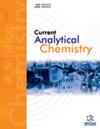Influence of the Presence of Sulfur and Oxygen Atoms on Molecular, Thermodynamic and Transport Properties in Hydrocarbon Mixtures
IF 1.7
4区 化学
Q3 CHEMISTRY, ANALYTICAL
引用次数: 0
Abstract
Introduction: Crude oil is a complex blend of various hydrocarbon families, with compositions that vary depending on the source well and exploitation duration. To categorize its constituents, SARA analysis divides them into saturated, aromatic, resins, and asphaltenes. Heavy asphaltene- rich crude oils can present challenges like viscosity and pipeline blockages, which are often addressed with viscosity-reducing additives. However, a theoretical framework explaining how these additives affect crude oil is lacking, relying primarily on empirical observations. To optimize these additives, it is crucial to understand the underlying chemical and physical processes. This study hypothesizes that asphaltenic crude oils influence viscosity through colloidal properties linked to molecular interactions. Methods: The research aimed to analyze the impact of sulfur in asphaltenes and oxygen in flow improvers on the transport properties of an idealized crude oil, with the goal of predicting additive feasibility. A methodology that combined computational quantum chemistry and statistical thermodynamics was used. An idealized model of crude oil was created, consisting of non-polar alkanes and polar asphaltenes with sulfur atoms. A flow improver was simulated with an aromatic-aliphatic structure containing oxygen and hydroxyl groups, and viscosity was calculated. Results: This study assessed the transport properties of the mixture using principles of statistical thermodynamics. The theoretical insights revealed that reducing viscosity in asphaltene-rich crude oils with additives depends on several critical factors, including the formation of the dispersed phase, the reduced viscosity of the additive, and the effects of dilution. The research identified a strong link between the enhanced effectiveness of these additives and their structural and molecular properties. Conclusion: The theoretical results suggest that additives that act as viscosity reducers in asphalt crudes achieve optimal performance when they possess both higher polarity and reduced viscosity.硫原子和氧原子的存在对碳氢化合物混合物分子、热力学和传输特性的影响
简介:原油是多种碳氢化合物的复杂混合物,其成分因油源井和开采时间而异。为了对其成分进行分类,SARA 分析法将其分为饱和、芳香、树脂和沥青质。富含重质沥青质的原油会带来粘度和管道堵塞等问题,通常需要使用降粘添加剂来解决。然而,目前还缺乏解释这些添加剂如何影响原油的理论框架,主要依靠经验观察。要优化这些添加剂,了解其基本的化学和物理过程至关重要。本研究假设沥青质原油通过与分子相互作用相关的胶体特性影响粘度。方法:研究旨在分析沥青质中的硫和流动性改进剂中的氧对理想化原油输送特性的影响,目的是预测添加剂的可行性。研究采用了一种结合计算量子化学和统计热力学的方法。创建的理想化原油模型由非极性烷烃和含硫原子的极性沥青质组成。模拟了含有氧和羟基的芳香-脂肪结构的流动改进剂,并计算了粘度。结果本研究利用统计热力学原理评估了混合物的传输特性。理论见解表明,使用添加剂降低富含沥青质原油的粘度取决于几个关键因素,包括分散相的形成、添加剂降低的粘度以及稀释的影响。研究发现,这些添加剂的增强效果与其结构和分子特性之间存在密切联系。结论理论结果表明,在沥青原油中起降粘作用的添加剂在同时具有较高极性和较低粘度时,可达到最佳性能。
本文章由计算机程序翻译,如有差异,请以英文原文为准。
求助全文
约1分钟内获得全文
求助全文
来源期刊

Current Analytical Chemistry
化学-分析化学
CiteScore
4.10
自引率
0.00%
发文量
90
审稿时长
9 months
期刊介绍:
Current Analytical Chemistry publishes full-length/mini reviews and original research articles on the most recent advances in analytical chemistry. All aspects of the field are represented, including analytical methodology, techniques, and instrumentation in both fundamental and applied research topics of interest to the broad readership of the journal. Current Analytical Chemistry strives to serve as an authoritative source of information in analytical chemistry and in related applications such as biochemical analysis, pharmaceutical research, quantitative biological imaging, novel sensors, and nanotechnology.
 求助内容:
求助内容: 应助结果提醒方式:
应助结果提醒方式:


